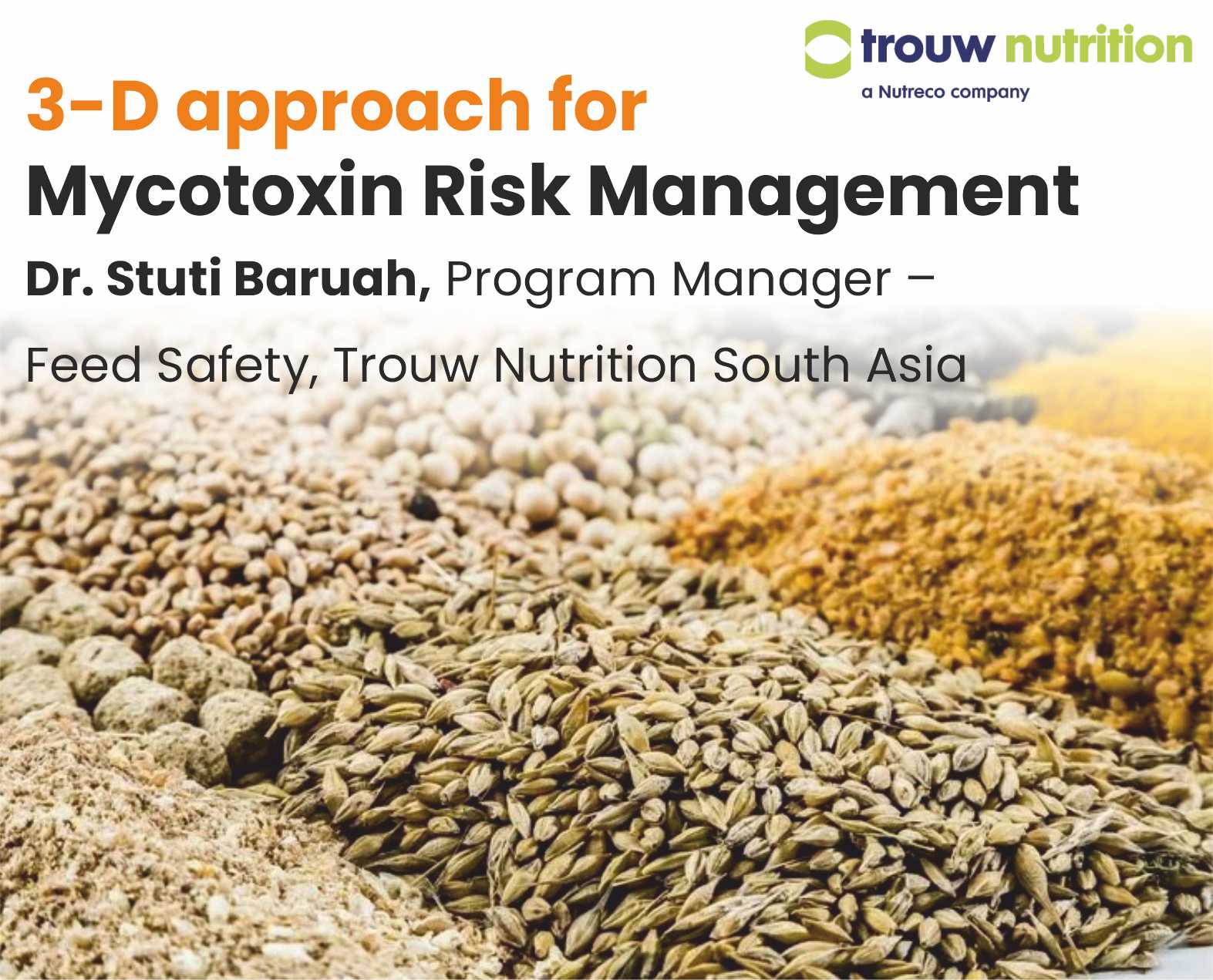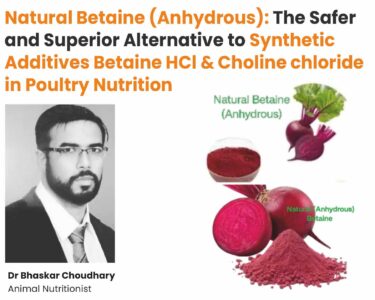3-D approach for Mycotoxin Risk Management
Dr. Stuti Baruah, Program Manager – Feed Safety, Trouw Nutrition South Asia
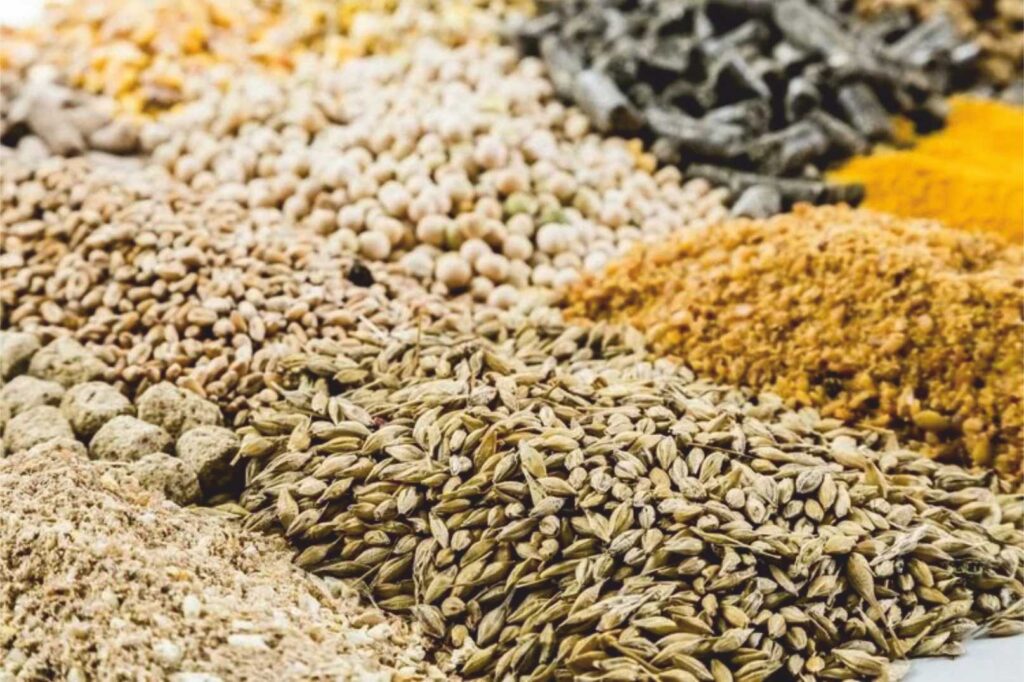
Mycotoxicosis are diseases caused by the poisonous effects of the toxins produced by filamentous micro fungi (i.e., toxigenic moulds). Hundreds of mycotoxins are known and can produce mild to severe toxic effects when they occur above levels of concern. Poultry is particularly susceptible to mycotoxicosis, as they are often fed diets that contain a variety of grains and other ingredients that may be contaminated with mycotoxins.
The importance of mycotoxin problems in poultry is probably considerable yet difficult to measure directly. Chronic low levels of exposure to more than one type of mycotoxin appears to be a very common now a days. Usage of alternate raw materials in poultry diets also causes the risk of exposure to multiple mycotoxins.
Multiple mycotoxicosis in poultry refers to the presence of two or more different mycotoxins in the same feed or feed ingredient, which can lead to more severe and complex symptoms. The symptoms of mycotoxicosis in poultry can vary depending on the type and degree of the toxin exposure.
Some of the most common symptoms include decreased feed intake, reduced growth, poor-egg production, decreased immunity, and even death in severe cases. When multiple mycotoxins are present, the symptoms may be more severe and may include a range of different effects on the birds’ health and performance.
Feed and food production chains are at risk, globally due to –
- Mycotoxin contamination is one of the main threats in feed production. Improper feed storage, heat & humidity favour the growth of toxicogenic fungi, which produce mycotoxins.
- The sharp rise in international trade has intensified the mycotoxin risk globally.
- Mycotoxin levels in feed and food require careful monitoring and control.
Mycotoxins can have additive, synergistic, and antagonistic effects with other toxins, infectious agents, and nutritional requirements. Mycotoxins can also interact with drugs used as therapeutic agents and diminish the effects of vaccines administered to poultry.
Common mycotoxins associated with mycotoxicosis in poultry include Aflatoxins, Ochratoxins, Fumnonisins, Zearalenone, and Trichothecenes such as deoxynivalenol (DON) and T-2 toxins. Chronic or intermittent exposure can occur in regions where grain and feed ingredients are of poor quality and when feed storage is substandard or prolonged. Impaired production efficiency can be a clue to a mycotoxin problem, as can improvement due to correction of feed management deficiencies.
Clinical signs of mycotoxin exposure in poultry may include the following:
- GI issues
- Organ damage, particularly liver and kidneys
- Immunosuppression
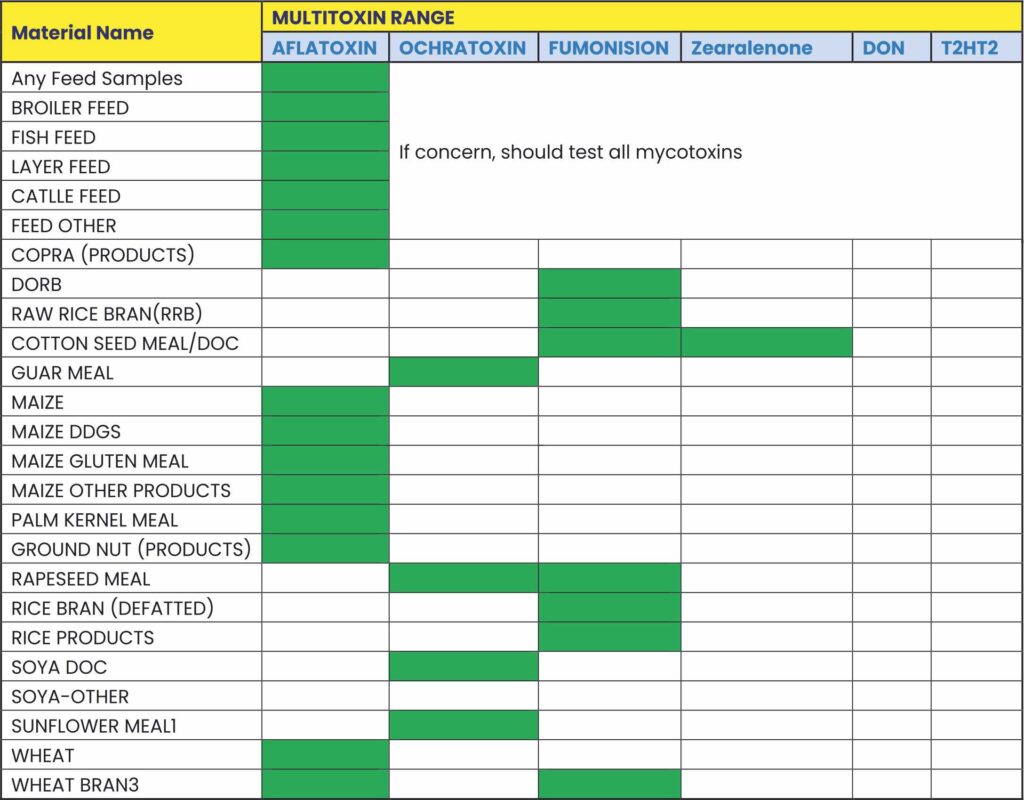
Oral ulcers and crusts occurring on the palate or tip of the tongue and oesophagus can occur with exposure to mycotoxins, including aflatoxin and mycotoxins produced by Fusarium toxins, such as the trichothecenes T-2 toxin (T-2), deoxynivalenol (DON).
Diagnosis of mycotoxicosis can be done by:
- History; clinical signs
- Mouldy feed
- Detection and quantification of specific mycotoxins
Feed and ingredient samples should be properly collected and promptly submitted for analysis.
Material wise Mycotoxin analysis that can be done:
Prevention of Mycotoxicosis can be done by using Mould-free feed and ingredients implementing good agricultural practices and management practices.
3 D approach for Mycotoxin Risk Management: Using a broad-spectrum mycotoxin binder would help farmers mitigate the risk of multiple mycotoxins. TOXO-XL offers a total solution against a broad spectrum of toxins produced by moulds, TOXO-XL forms part of an integrated approach at supporting health of livestock and poultry to maintain health status and performance during exposure to mycotoxins. TOXO-XL is designed for all poultry, dairy and pig species and contains multiple mechanisms to help support the animal in dealing with mycotoxins. TOXO-XL consists of an effective aflatoxin binder and specific ingredients that support gut wall integrity and the immune system.
TOXO® XL is based on 3 pillars of protection:
1. Mycotoxin binding
2.Gut wall protection
3.Immuno modulation
Benefits of 3-D approach by Trouw Nutrition’s Toxo-XL:
• Binds and eliminates mycotoxins.
• Strengthens intestinal barriers.
• Modulates immune response.
• Mitigates animal performance impairment caused by exposure to mycotoxins.
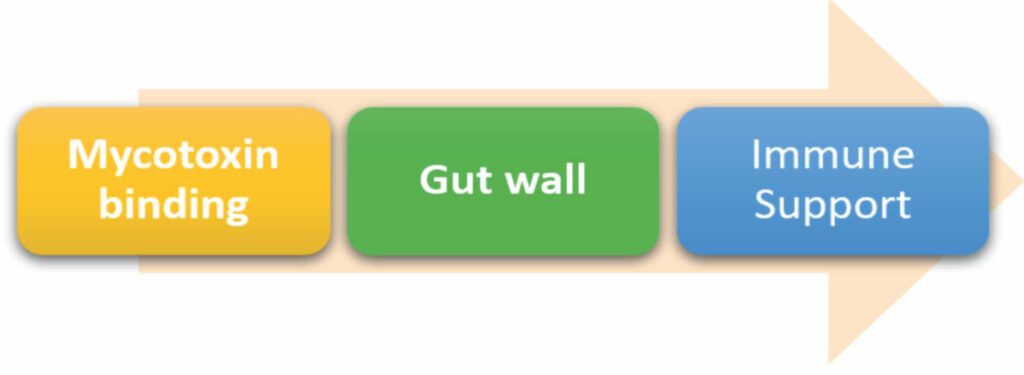
Highly layered smectite clays present in Toxo-XL have high aflatoxin binding. It binds with other polar mycotoxins and LPS. Glucose biopolymers protect the tight junctions and Beta glucans provide immunity. This is the three-dimensional way of mycotoxin risk management.
In conclusion, mycotoxins are silent thieves that eat away profits in livestock and poultry production by affecting performance and health. It is important to routine scan raw materials and finished feed to take appropriate actions.
It is impossible to have one silver bullet to bind and eliminate all mycotoxins, emerging mycotoxins and counteract the immunosuppression caused by synergies and interactions of multiple mycotoxins. Hence, producers need to look at more integrated and holistic approach to counter multiple mycotoxin challenge.
3-D approach gives a more rational, scientific approach to negate the detrimental effects of multiple mycotoxin challenges in poultry and livestock production.
For further information, kindly write to us at customercareindia@trouwnutrition.com or visit our website: www.trouwnutrition.in
References: Manual of poultry diseases, Selko internal data.


